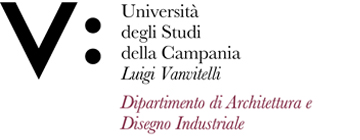Giorgio FRUNZIO
Insegnamento di VERIFICA STRUTTURALE
Corso di laurea in DESIGN E COMUNICAZIONE
SSD: ICAR/08
CFU: 6,00
ORE PER UNITÀ DIDATTICA: 48,00
Periodo di Erogazione: Secondo Quadrimestre
Italiano
| Lingua di insegnamento | ITALIANO |
| Contenuti | Comprensione dei principi del comportamento meccanico dei manufatti. Durante il corso si individuano i macro-argomenti: 1. lIndividuazione e definizione di uno schema strutturale; 2. Equilibrio dello schema strutturale; 3. Cinematica dello schema strutturale; 4. La trave quale esempio di elemento strutturale, le caratteristiche della sollecitazione per la trave con i relativi diagrammi. Il corso ha come obbiettivi quello di affidare agli allievi delle definizioni ed educarli ad avere un pensiero astratto rispetto alla realtà. Al completamento di ogni macro-argomento, la cui durata di approfondimento è di circa un mese di lezioni, lo studente affronta una prova individuale intercorso, al fine di elaborare quanto ha appreso. La prova finale (che corrisponde alla prova di esame) consiste nella scelta di un oggetto, che può anche essere stato realizzato/progettato durante uno degli altri corsi in parallelo, che viene riprodotto attraverso lo schema corrispondente ed esaminato dal punto di vista del comportamento statico o cinematico, verificandone l'equilibrio e la capacità di sopportare i pesi, e imparando a gestire gli eventuali movimenti concessi. Nell'ambito del corso saranno favorite attività di gruppo per formare anche alla collaborazione. Particolare attenzione sarà volta all'individuazione (nel rispetto del SI) delle grandezze fisiche e all'analisi dimensionale. |
| Testi di riferimento | Molti sono i testi in cui è possibile trovare i riferimenti per il corso. |
| Obiettivi formativi | Conoscenze e capacità di comprensione |
| Prerequisiti | Nozioni base di Matematica riconducibili all'insegnamento del primo periodo: Fondamenti di Matematica |
| Metodologie didattiche | Lezioni frontali intervallate da prove intercorso al termine di ogni macro argomento |
| Metodi di valutazione | Verifica finale individuale: le singole prove intercorso sono opportunamente valutate al fine di rendere l'esame finale la sintesi di quanto si è appreso durante lo svolgimento di tutto il corso. |
| Altre informazioni | Nell'ambito del corso saranno disponibili attività su teams |
| Programma del corso | 1_I SISTEMI DI FORZE - Vettori |
English
| Teaching language | Italian |
| Contents | Understanding of the principles of the mechanical behavior of artifacts. During the course the macro-topics are identified: 1. Identification and definition of a structural scheme; 2. Balance of the structural scheme; 3. Kinematics of the structural scheme; 4. The beam as an example of a structural member, the stress characteristics for the beam with related diagrams. The course aims to entrust the students with definitions and educate them to have an abstract thought with respect to reality. Upon completion of each macro-topic, the duration of which is about a month of lessons, the student faces an individual test, in order to elaborate what he has learned. The final test (which corresponds to the exam test) consists in the choice of an object, which may also have been created/designed during one of the other parallel courses, which is reproduced through the corresponding scheme and examined from the point of view of static behavior or kinematic, verifying its balance and ability to bear weight, and learning to manage any movements allowed. As part of the course, group activities will be favored to also form collaboration. Particular attention will be paid to the identification (in compliance with the SI) of the physical quantities and to the dimensional analysis. |
| Textbook and course materials | There are many texts where references to the course can be found. |
| Course objectives | Knowledge and understanding skills |
| Prerequisites | Basic notions of Mathematics attributable to the teaching of the first period: Fundamentals of Mathematics |
| Teaching methods | Frontal lessons interspersed with tests at the end of each macro topic |
| Evaluation methods | Individual final assessment: the individual tests that have taken place are appropriately evaluated in order to make the final exam the synthesis of what has been learned during the entire course. |
| Other information | Activities on Teams will be available as part of the course |
| Course Syllabus | 1_THE SYSTEMS OF FORCES - Vectors |








